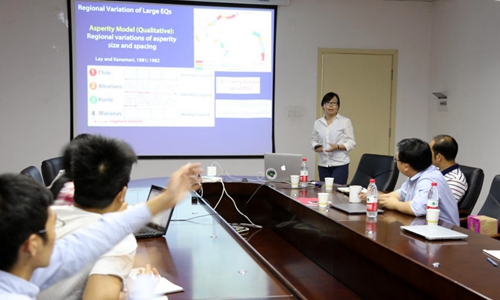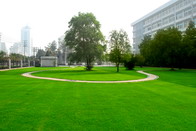Invited by State Key Laboratory of Geodesy and Earth’s Dynamics (SKLGED), Dr. Ye Lingling from California Institute of Technology visited Institute of Geodesy and Geophysics(IGG) and gave an academic report in title “Global Variations of Large Megathrust Earthquake Rupture Characteristics” on May 23.
The report firstly showed a new method to help study the characteristics of the earthquake rupture, which measures the Radiation Energy Enhancement factor of the Event(REEE). The REEE value is sensitive to the rupture complexity of large earthquakes and reflect whether the earthquake rupture is homogeneous or discrete. Then she statisticed the REEE value of earthquake above Mw7.0 in global subduction zone since 1990 and analyzed the global spatial distribution characteristics of earthquake REEF values. Taking the Mw9.2 earthquake in Sumatra in 2004 and the M9.1 earthquake in northeastern Japan in 2011 as an example, she demonstrated significant differences in REEF value distributions of them and made a variety of interpretation for these complex situation. They may include the rupture distribution of the earthquake, the depth of the earthquake, the degree of fault coupling of the subduction plate, and the subduction angle and age of the plate. The audiences had a deep discussion with Dr. Ye about the complexity of the spatial distribution of REEF values in the global subduction zone and the diversity of REEE values for different events in the same region at the end of the report.
Dr. Ye Lingling graduated from University of Calif Santa Cruz in 2015 and then worked as a postdoctoral fellow at the Seismological Laboratory of California Institute of Technology. Her main research interest is the physical properties of seismic waves on seismic fault, strong ground vibrations and deep internal structures of the earth.

Dr. Ye is giving the report.

